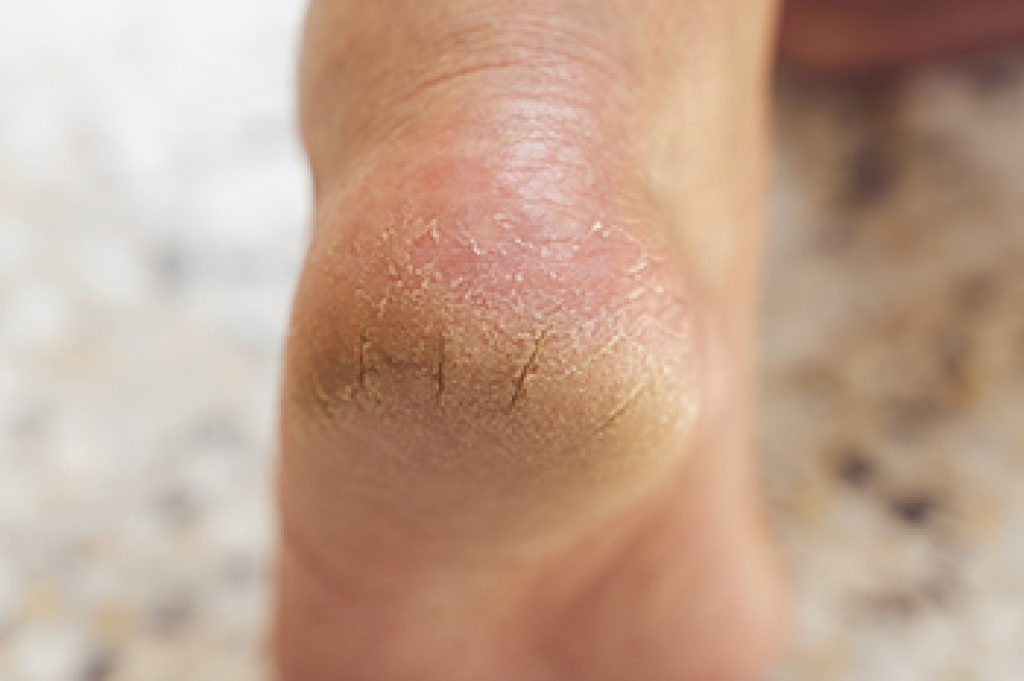
Cracked heels, characterized by dry, fissured skin on the heels and feet, are a common foot problem often caused by dryness and thickened skin. Symptoms include visible cracks, redness, itching, and pain, especially when standing or walking. Effective prevention involves regular moisturizing with emollients to keep the skin hydrated and supple. Exfoliation to remove dead skin cells and wearing properly fitting shoes also help prevent cracks. When cracks occur, relief focuses on moisturizing creams containing urea or salicylic acid to soften thickened skin and promote healing. Applying petroleum jelly or coconut oil overnight under socks can accelerate healing. For severe cases, a chiropodist can remove thickened skin and prescribe specialized creams. If you have developed cracked heels, it is suggested that you visit this type of healthcare professional who can effectively treat this condition.
Cracked heels, also known as heel fissures, can cause pain and discomfort. If your cracked heels are bothering you, please consult with one of the chiropodists from The Footcare Centre. Our chiropodists will assess your condition and provide you with quality foot and ankle treatment.
Dry, thickened skin around the rim of the heel is typically the first sign of cracked heels. While this condition is common and usually just a nuisance, some cases can be more severe. If left untreated and as more pressure is placed on the heel, the cracks become deeper and eventually walking and standing can be painful. These deep cracks or fissures can bleed and also become infected. Those with diabetes need to be especially careful as fissures could lead to diabetic foot ulcers.
Causes
Cracked heels can be the result of several different factors, including:
- Dry skin
- Taking long, hot showers or using harsh soaps
- Standing for long periods of time
- Walking barefoot
- Walking in shoes with an open back, such as sandals or flip flops
- Wearing shoes that do not fit properly
- Living in a cold or dry climate
- Certain skin conditions, such as eczema or psoriasis
Treatment
There are many at-home treatment remedies for cracked heels. Applying moisturizers to the heel can help hydrate the skin. Soaking your feet in warm water and exfoliating them with a loofah or pumice stone can help to buff away dead skin cells. If you are afflicted with cracked heels, it is recommended that you see a chiropodist for treatment.
Prevention
You can prevent cracked heels by:
- Avoiding standing in one position for prolonged periods of time
- Wearing well-fitted shoes with a closed back
- Washing your feet with gentle soaps and lukewarm water
- Moisturizing the feet daily
If you have any questions, please feel free to contact our office located in . We offer the newest diagnostic and treatment technologies for all your foot care needs.
